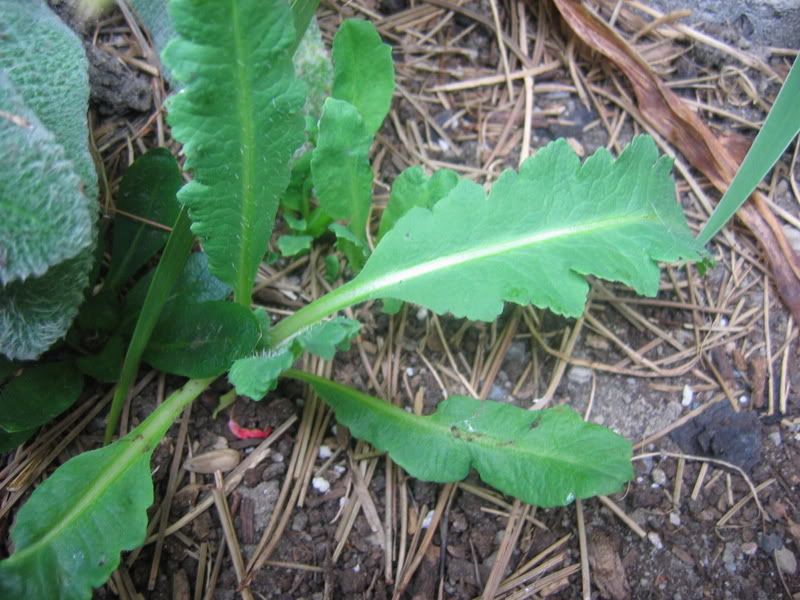Name that plant!
 This little plant is yet another example of why my planning never really seems to work. I just can't resist the occasional impulse buy. This is probably why I am already facing the necessity of either getting rid of some plants or expanding my beds.
This little plant is yet another example of why my planning never really seems to work. I just can't resist the occasional impulse buy. This is probably why I am already facing the necessity of either getting rid of some plants or expanding my beds.
But back to the little plant. It is also an example of the new life stirring in the flower beds as the season winds down. You may recognize the crinkled, greyish leaves of a poppy plant and recalled that it is the Orientals that pull a disappearing act in the summer, only to pop up again as the season winds down. (You may also notice the little rosette of Oenothera fruticosa hiding to its left. That's one that I will be moving. Good thing I took a picture. I honestly didn't notice it when I looked with my own peepers.)
This is 'Beauty of Livermere', what I thought was an orange Oriental poppy when I bought it, based on the picture on the label, but apparently will really be red, according to Internet descriptions. I haven't seen the blooms yet, so my own evaluation just has to wait.
Oriental poppies, Papaver orientale, are the perennial member of the Papaver genus. There are others that make that claim, like Iceland poppies, but it's a little tenuous. Iceland poppies can behave much like annuals or biennials, reappearing more often from seed than from the root. Orientals, on the other hand, can easily last decades. I have a friend in her 80's who still has a clump she initially sliced off the edge of her mother's. She's given me seeds, but I was impatient... Don't worry, Audrey, I've saved them for the next house.
Orientals are also the biggest and the boldest of the poppies, silken beauty writ large. They bloom in mid-to-late spring, produce the big round seedheads that are decorative in their own right (and are often used in dry flower arrangements, au naturel or spray-painted) and then slowly die back, leaving a gap in the flower bed. The gap can be dealt with in various ways, like allowing tender annuals to grow over it, but I just plunked a potted coleus right on top of it. That meant frequent checks for new growth, but seeing as the light-weight pot kept blowing over whenever it dried out, I have not been obliged to curse my absent-mindedness. The new growth has started, and the coleus has been shifted to a new position on a stepping stone.
It's enough to make you eager for spring! I hope Alice grows poppies...
Technorati tag: Poppies


No comments:
Post a Comment